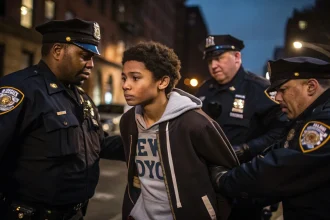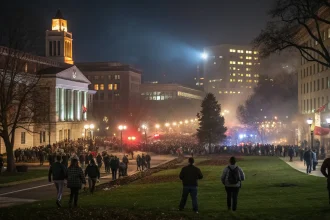A U.S. official has revealed that the National Guard is developing plans to train up to 500 troops in each state to form specialized rapid-response units dedicated to handling civil disturbances. This initiative represents a significant expansion of the Guard’s capabilities to respond to domestic unrest.
The program aims to create dedicated teams across all states that can quickly mobilize during protests, riots, or other civil emergencies that might overwhelm local law enforcement. According to the official, these specialized units would receive training specifically tailored to civil disturbance scenarios.
Expanding Domestic Response Capabilities
The National Guard has historically played a critical role in responding to domestic emergencies, from natural disasters to civil unrest. However, this new initiative suggests a more structured approach to preparing for civil disturbances specifically.
By training up to 500 troops per state, the Guard would create a substantial nationwide network of personnel prepared for rapid deployment. This could potentially amount to over 25,000 specially trained troops across all states and territories if fully implemented.
The training would likely include crowd control techniques, de-escalation strategies, and coordination with local law enforcement agencies. These units would operate under state authority but with standardized training protocols.
Recent Deployments and Lessons Learned
The National Guard has been called upon repeatedly in recent years to respond to civil unrest. Notable deployments included responses to protests in cities across America during 2020 and the January 6, 2021 Capitol riot.
These experiences have likely informed the decision to create dedicated response teams. During previous deployments, some Guard units faced challenges including:
- Rapid mobilization difficulties
- Inconsistent training for civil disturbance missions
- Coordination problems with local agencies
- Equipment shortages for crowd management
The new initiative appears designed to address these gaps by creating units specifically prepared for such scenarios.
Questions About Implementation
“This represents a major shift in how we prepare for domestic response missions,” the U.S. official stated. “The goal is to have trained personnel ready to support local authorities when needed, with clear protocols and proper equipment.”
The plan raises questions about implementation timelines, funding sources, and how these units would integrate with existing emergency response frameworks. It remains unclear whether the training would be mandatory for selected Guard members or if states would have flexibility in how they build these teams.
Civil liberties groups may also scrutinize the initiative, as expanded military presence in domestic disturbances has historically raised concerns about appropriate use of force and militarization of response to civilian protests.
The National Guard Bureau, which oversees Guard units nationwide, would likely provide guidance on training standards while individual states would maintain operational control of their forces, consistent with the Guard’s dual state-federal structure.
As communities across the country continue to experience various forms of civil unrest, this initiative signals that military and homeland security planners anticipate the need for more organized response capabilities in the coming years.









